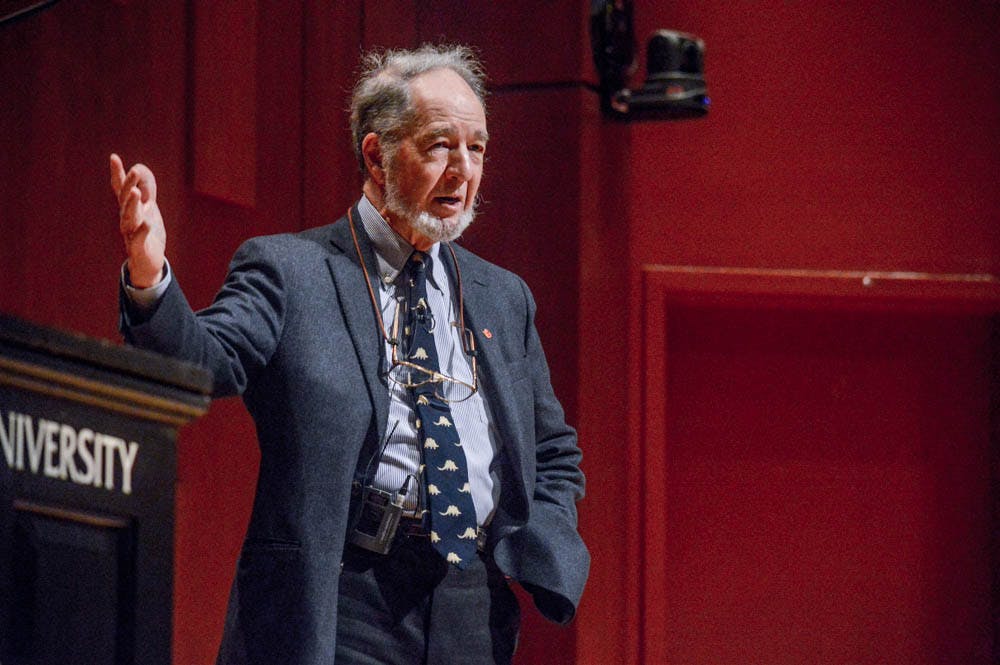Jared Diamond, Pulitzer Prize-winning historian and biologist, gave a talk Wednesday about his research on global development and inequality. The talk, titled “Why did history unfold in different ways on different continents for the last 13,000 years?,” filled the seats of the Salomon Center’s DeCiccio Family Auditorium.
Diamond’s work focuses primarily on the external conditions that have led societies to develop differently throughout history.
Diamond attended Harvard and the University of Cambridge, studying geography, history and biology. His work has received numerous honors from groups such as the MacArthur Foundation, the American Physiological Society and the National Geographic Society. His book, “Guns, Germs and Steel,” won the Pulitzer Prize for general nonfiction in 1997. Diamond continues his research as a professor of geography at the University of California at Los Angeles.
“I read an excerpt from his book in high school, and it was really memorable,” said Marisa Millenson ’16, an audience member.
Diamond’s talk reinforced ideas first presented in his book, offering reasons for the different development of societies. His argument centered on two variables: the uneven distribution of domesticated animals and plants across the globe and the advantageous geography of certain continents.
Plants and animals susceptible to domestication were more common on the Eurasian continent, speeding up the process of the agricultural revolution and consequently the industrial revolution, he said. The “east-west orientation” of the Eurasian continent was also vital to its quick development. The relatively common climate facilitated the spread of agricultural methods and technology throughout the continent. But the Americas and Africa have a “north-south orientation” and thus face greater challenges, as the climate conditions vary depending on latitude.
Throughout the talk, Diamond also spoke about the origins of agriculture, the six criteria for domestication and how both led to the population and technology explosion that catapulted society into the modern day.
Fans of and newcomers to Diamond’s work alike found the talk interesting and powerful, spurring meaningful discussions.
A microphone was open to the audience afterwards, allowing students and other listeners to clarify some of Diamond’s points and present their own questions.
Overall, the audience seemed enthusiastic about Diamond’s findings and the following discussion. He garnered a large ovation at the end of the evening, and several members of the audience stayed after the event to speak to Diamond in person and get his signature.
“It was nice to discuss these things,” said Abby Atkinson ’19. “Sometimes it can be uncomfortable, but a formal discussion opens it up to a wider audience.”





